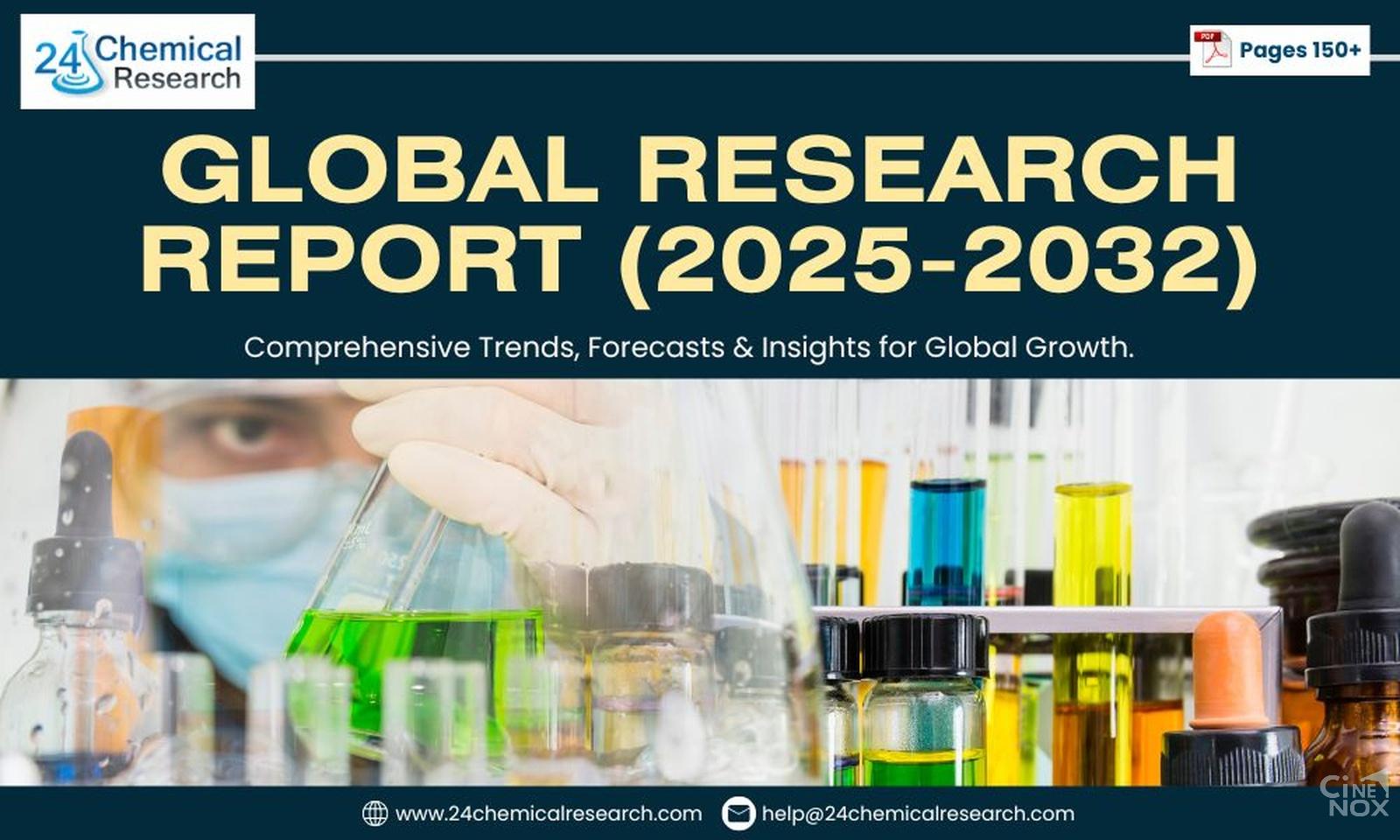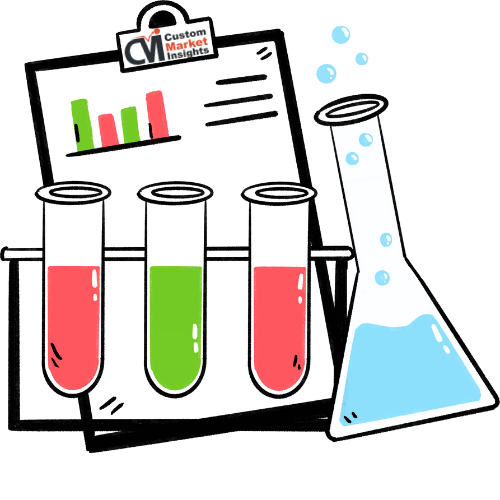Hydrogenated NBR Market, Global Outlook and Forecast 2025-2032
The global Hydrogenated NBR (HNBR) Market is experiencing steady expansion, with its valuation reaching USD 1.23 billion in 2024. According to comprehensive industry analysis, the market is projected to grow at a compound annual growth rate (CAGR) of 5.3%, reaching approximately USD 1.78 billion by 2032. This growth trajectory is primarily driven by increasing industrial demand for high-performance elastomers that offer superior resistance to heat, oil, and chemicals across multiple sectors.
Hydrogenated Nitrile Butadiene Rubber has emerged as a critical material in harsh operating environments, particularly in automotive and oilfield applications where traditional rubbers fail. Its molecular stability—achieved through hydrogenation of NBR—makes it indispensable for manufacturers prioritizing durability and longevity in their components.
Download FREE Sample Report: https://www.24chemicalresearch.com/download-sample/296649/global-hydrogenated-nbr-forecast-market-2025-2032-983
Market Overview & Regional Analysis
Asia-Pacific commands the largest share of HNBR production globally, with China, Japan, and South Korea leading both consumption and manufacturing. The region's dominance stems from its extensive automotive manufacturing base and rapidly growing industrial sector. North America follows closely, where stringent performance requirements in oil & gas applications fuel demand. Europe maintains steady growth through technical applications in automotive transmissions and industrial machinery, while emerging markets in Latin America and the Middle East show increasing adoption in energy sector applications.
Notably, while developed markets focus on high-value specialty grades of HNBR, emerging economies are driving volume growth through more cost-effective formulations. This regional divergence creates opportunities for manufacturers to develop tiered product portfolios catering to different performance and price requirements.
Key Market Drivers and Opportunities
The HNBR market benefits from multiple growth catalysts—automotive industry shifts toward higher-temperature engine components, increasing oilfield exploration activities requiring durable sealing solutions, and expanding industrial automation driving demand for reliable rubber parts. In particular, the push for electric vehicles presents new opportunities, as HNBR's thermal stability makes it suitable for battery cooling systems and high-voltage cable insulation.
Recent innovations in polymer technology have expanded HNBR's applicability. Advanced grades now serve in medical devices and aerospace components, while ongoing R&D focuses on improving low-temperature flexibility without compromising heat resistance. These developments position HNBR for penetration into new verticals beyond its traditional strongholds.
Challenges & Restraints
Despite strong fundamentals, the market faces headwinds—raw material price volatility, particularly for acrylonitrile and butadiene, squeezes manufacturer margins. Trade policies affecting synthetic rubber imports and exports create supply chain uncertainties, while environmental regulations on production processes necessitate capital-intensive upgrades. Furthermore, the emergence of alternative materials like fluoroelastomers in extreme temperature applications pressures HNBR's value proposition in premium segments.
Another challenge lies in HNBR's complex manufacturing process, which limits production scalability compared to conventional rubbers. This constraint could hamper the industry's ability to respond to sudden demand surges, particularly from the automotive sector during economic recoveries.
Market Segmentation by Type
High Temperature Grade HNBR
Middle High Temperature Grade HNBR
Low Temperature Grade HNBR
Download FREE Sample Report: https://www.24chemicalresearch.com/download-sample/296649/global-hydrogenated-nbr-forecast-market-2025-2032-983
Market Segmentation by Application
Automotive (seals, gaskets, hoses)
Oil Industry (drilling equipment, valves)
Industrial Machinery (belts, rollers)
Other Specialty Applications
Market Segmentation and Key Players
LANXESS
Arlanxeo
Zeon Corporation
Seal & Design
Rado Gummi GmbH
Polycomp
Gotlands Gummifabrik
CHU HUNG OIL SEALS INDUSTRIAL
Shanghai Zannan SciTech
Get Full Report Here: https://www.24chemicalresearch.com/reports/296649/global-hydrogenated-nbr-forecast-market-2025-2032-983
International: +1(332) 2424 294 | Asia: +91 9169162030
Website: https://www.24chemicalresearch.com/
Follow us on LinkedIn: https://www.linkedin.com/company/24chemicalresearch
The global Hydrogenated NBR (HNBR) Market is experiencing steady expansion, with its valuation reaching USD 1.23 billion in 2024. According to comprehensive industry analysis, the market is projected to grow at a compound annual growth rate (CAGR) of 5.3%, reaching approximately USD 1.78 billion by 2032. This growth trajectory is primarily driven by increasing industrial demand for high-performance elastomers that offer superior resistance to heat, oil, and chemicals across multiple sectors.
Hydrogenated Nitrile Butadiene Rubber has emerged as a critical material in harsh operating environments, particularly in automotive and oilfield applications where traditional rubbers fail. Its molecular stability—achieved through hydrogenation of NBR—makes it indispensable for manufacturers prioritizing durability and longevity in their components.
Download FREE Sample Report: https://www.24chemicalresearch.com/download-sample/296649/global-hydrogenated-nbr-forecast-market-2025-2032-983
Market Overview & Regional Analysis
Asia-Pacific commands the largest share of HNBR production globally, with China, Japan, and South Korea leading both consumption and manufacturing. The region's dominance stems from its extensive automotive manufacturing base and rapidly growing industrial sector. North America follows closely, where stringent performance requirements in oil & gas applications fuel demand. Europe maintains steady growth through technical applications in automotive transmissions and industrial machinery, while emerging markets in Latin America and the Middle East show increasing adoption in energy sector applications.
Notably, while developed markets focus on high-value specialty grades of HNBR, emerging economies are driving volume growth through more cost-effective formulations. This regional divergence creates opportunities for manufacturers to develop tiered product portfolios catering to different performance and price requirements.
Key Market Drivers and Opportunities
The HNBR market benefits from multiple growth catalysts—automotive industry shifts toward higher-temperature engine components, increasing oilfield exploration activities requiring durable sealing solutions, and expanding industrial automation driving demand for reliable rubber parts. In particular, the push for electric vehicles presents new opportunities, as HNBR's thermal stability makes it suitable for battery cooling systems and high-voltage cable insulation.
Recent innovations in polymer technology have expanded HNBR's applicability. Advanced grades now serve in medical devices and aerospace components, while ongoing R&D focuses on improving low-temperature flexibility without compromising heat resistance. These developments position HNBR for penetration into new verticals beyond its traditional strongholds.
Challenges & Restraints
Despite strong fundamentals, the market faces headwinds—raw material price volatility, particularly for acrylonitrile and butadiene, squeezes manufacturer margins. Trade policies affecting synthetic rubber imports and exports create supply chain uncertainties, while environmental regulations on production processes necessitate capital-intensive upgrades. Furthermore, the emergence of alternative materials like fluoroelastomers in extreme temperature applications pressures HNBR's value proposition in premium segments.
Another challenge lies in HNBR's complex manufacturing process, which limits production scalability compared to conventional rubbers. This constraint could hamper the industry's ability to respond to sudden demand surges, particularly from the automotive sector during economic recoveries.
Market Segmentation by Type
High Temperature Grade HNBR
Middle High Temperature Grade HNBR
Low Temperature Grade HNBR
Download FREE Sample Report: https://www.24chemicalresearch.com/download-sample/296649/global-hydrogenated-nbr-forecast-market-2025-2032-983
Market Segmentation by Application
Automotive (seals, gaskets, hoses)
Oil Industry (drilling equipment, valves)
Industrial Machinery (belts, rollers)
Other Specialty Applications
Market Segmentation and Key Players
LANXESS
Arlanxeo
Zeon Corporation
Seal & Design
Rado Gummi GmbH
Polycomp
Gotlands Gummifabrik
CHU HUNG OIL SEALS INDUSTRIAL
Shanghai Zannan SciTech
Get Full Report Here: https://www.24chemicalresearch.com/reports/296649/global-hydrogenated-nbr-forecast-market-2025-2032-983
International: +1(332) 2424 294 | Asia: +91 9169162030
Website: https://www.24chemicalresearch.com/
Follow us on LinkedIn: https://www.linkedin.com/company/24chemicalresearch
Hydrogenated NBR Market, Global Outlook and Forecast 2025-2032
The global Hydrogenated NBR (HNBR) Market is experiencing steady expansion, with its valuation reaching USD 1.23 billion in 2024. According to comprehensive industry analysis, the market is projected to grow at a compound annual growth rate (CAGR) of 5.3%, reaching approximately USD 1.78 billion by 2032. This growth trajectory is primarily driven by increasing industrial demand for high-performance elastomers that offer superior resistance to heat, oil, and chemicals across multiple sectors.
Hydrogenated Nitrile Butadiene Rubber has emerged as a critical material in harsh operating environments, particularly in automotive and oilfield applications where traditional rubbers fail. Its molecular stability—achieved through hydrogenation of NBR—makes it indispensable for manufacturers prioritizing durability and longevity in their components.
Download FREE Sample Report: https://www.24chemicalresearch.com/download-sample/296649/global-hydrogenated-nbr-forecast-market-2025-2032-983
Market Overview & Regional Analysis
Asia-Pacific commands the largest share of HNBR production globally, with China, Japan, and South Korea leading both consumption and manufacturing. The region's dominance stems from its extensive automotive manufacturing base and rapidly growing industrial sector. North America follows closely, where stringent performance requirements in oil & gas applications fuel demand. Europe maintains steady growth through technical applications in automotive transmissions and industrial machinery, while emerging markets in Latin America and the Middle East show increasing adoption in energy sector applications.
Notably, while developed markets focus on high-value specialty grades of HNBR, emerging economies are driving volume growth through more cost-effective formulations. This regional divergence creates opportunities for manufacturers to develop tiered product portfolios catering to different performance and price requirements.
Key Market Drivers and Opportunities
The HNBR market benefits from multiple growth catalysts—automotive industry shifts toward higher-temperature engine components, increasing oilfield exploration activities requiring durable sealing solutions, and expanding industrial automation driving demand for reliable rubber parts. In particular, the push for electric vehicles presents new opportunities, as HNBR's thermal stability makes it suitable for battery cooling systems and high-voltage cable insulation.
Recent innovations in polymer technology have expanded HNBR's applicability. Advanced grades now serve in medical devices and aerospace components, while ongoing R&D focuses on improving low-temperature flexibility without compromising heat resistance. These developments position HNBR for penetration into new verticals beyond its traditional strongholds.
Challenges & Restraints
Despite strong fundamentals, the market faces headwinds—raw material price volatility, particularly for acrylonitrile and butadiene, squeezes manufacturer margins. Trade policies affecting synthetic rubber imports and exports create supply chain uncertainties, while environmental regulations on production processes necessitate capital-intensive upgrades. Furthermore, the emergence of alternative materials like fluoroelastomers in extreme temperature applications pressures HNBR's value proposition in premium segments.
Another challenge lies in HNBR's complex manufacturing process, which limits production scalability compared to conventional rubbers. This constraint could hamper the industry's ability to respond to sudden demand surges, particularly from the automotive sector during economic recoveries.
Market Segmentation by Type
High Temperature Grade HNBR
Middle High Temperature Grade HNBR
Low Temperature Grade HNBR
Download FREE Sample Report: https://www.24chemicalresearch.com/download-sample/296649/global-hydrogenated-nbr-forecast-market-2025-2032-983
Market Segmentation by Application
Automotive (seals, gaskets, hoses)
Oil Industry (drilling equipment, valves)
Industrial Machinery (belts, rollers)
Other Specialty Applications
Market Segmentation and Key Players
LANXESS
Arlanxeo
Zeon Corporation
Seal & Design
Rado Gummi GmbH
Polycomp
Gotlands Gummifabrik
CHU HUNG OIL SEALS INDUSTRIAL
Shanghai Zannan SciTech
Get Full Report Here: https://www.24chemicalresearch.com/reports/296649/global-hydrogenated-nbr-forecast-market-2025-2032-983
International: +1(332) 2424 294 | Asia: +91 9169162030
Website: https://www.24chemicalresearch.com/
Follow us on LinkedIn: https://www.linkedin.com/company/24chemicalresearch
0 Comments
0 Shares
70 Views
0 Reviews






